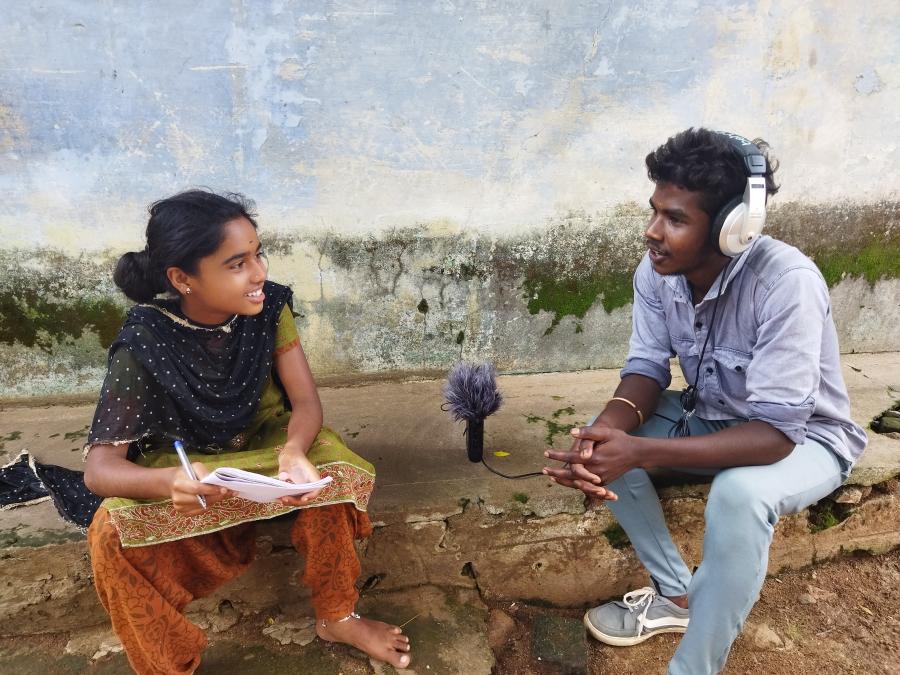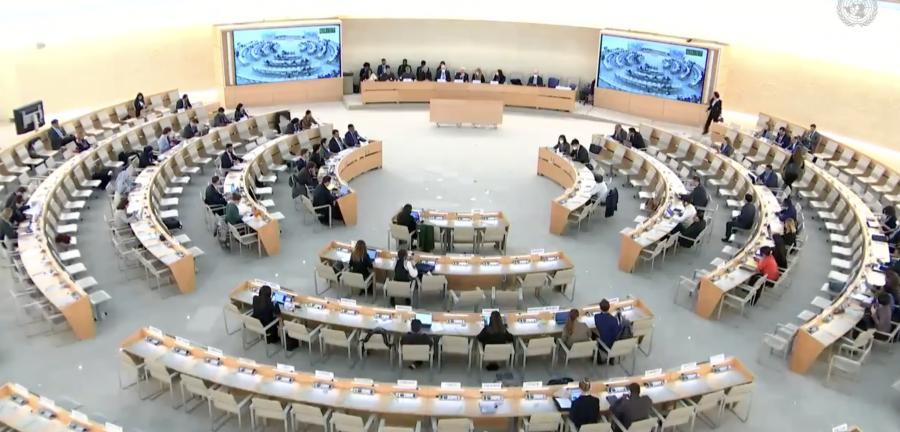The famous Chipko Andolan (Hug the Trees Movement) of Uttarakhand in the Himalayas inspired the villagers of the Uttara Kannada district of Karnataka Province in southern India to launch a similar movement to save their forests. In September 1983, men, women and children of Salkani "hugged the trees" in Kalase forest. (The local term for "hugging" in Kannada is appiko.) Appiko Andolan gave birth to a new awareness all over southern India.
In 1950, Uttara Kannada district forest covered more than 81 percent of its geographical area. The government, declaring this forest district a "backward" area, then initiated the process of "development". There major industries - a pulp and paper mill, a plywood factory and a chain of hydroelectric dams constructed to harness the rivers - sprouted in the are. These industries have overexploited the forest resource, and the dams have submerged huge-forest and agricultural areas. The forest had shrunk to nearly 25 percent of the district's area by 1980. The local population, especially the poorest groups, were displaced by the dams. The conversion of the natural mixed forests into teak and eucalyptus plantations dried up the water sources, directly affecting forest dwellers. In a nutshell, the three major p's - paper, plywood and power - which were intended for the development of the people, have resulted in a fourth p: poverty.
Deforestation in the Western Chats
The Sahyadri Range, or the Western Ghats, in southern India is the home of a tropical forest ecosystem. Although this tropical forest constitutes a potentially renewable resource, it is also a very fragile ecosystem and therefore merits special attention. The past 30 years have seen the onslaught of "development" activities and an increase in population, both of which have exhausted this fragile resource system. In the case of Kerala, which comprises 42 percent of the entire Western Ghat area, the forest cover fell from 44 percent in 1905 to a meager 9 percent in 1984.
Such deforestation in the Western Ghats has caused severe problems for all southern India. The recurring drought in the provinces of Karnataka, Maharashtra, Kerala and Tamil Nadu clearly indicates watershed degradation. The power generation, water supply and ultimately the whole economy of southern India is adversely affected. The drought in Karnataka Province indicates the extent of the damage caused by change in Sahyadri's fragile ecosystem. The ongoing "development" policy of exploiting the "resources - mainly forest and mineral resources - in the Western Ghats for the benefit of the elite has deprived the poor of their self-supporting systems.
The Appiko Movement is trying to save the Western Ghats by spreading its roots all over southern India. The movement's objectives can be classified into three major areas. First, the Appiko Movement is struggling to save the remaining tropical forests in the Western Ghats. Second, it is making a modest attempt to restore the greenery to denuded areas. Third, it is striving to propagate the idea of rational utilization in order to reduce the pressure on forest resources. To save, to grow and to use rationally - popularly known in Kannada as Ubsu ("save"), Belesu ("grow") and Balasu ("rational use") - is movement's popular slogan.
As said earlier, the deforestation in the Western Ghats has already affected hydroelectric dams, reservoirs and agriculture. The central government's Planning Commission has recognized the "high depletion" of natural resources in the Western Chats in it Seventh Plan document. The first area of priority for the Appiko Movement is the remaining tropical forests of Western Ghats. The area is so sensitive that to remove the forest cover will lead to a laterization process, converting the land into rocky mountains. Thus a renewable resources becomes a nonrenewable one. Once laterization sets in, it will take centuries for trees to grow on that land. Before we reach such an extreme point the Appiko Movement aims to save the remaining forests in the Western Ghats through organizing decentralized groups at the grassroots level to take direct action.
The Movement Methods
The Appiko Movement uses various techniques to raise awareness: foot marches in the interior forests, slide shows, folk dances, street plays and so on. The movement has achieved a fair amount of success: the state government has banned felling of green trees in some forest areas; only dead, dying and dry trees are felled to meet local requirements. The movement has spread to the four hill districts of Karnataka Province, and has the potential to spread to the Eastern Ghats in Tamil Nadu Province and to Goa Province.
The second area of the Appiko Movement's work is to promote afforestation on denuded lands. In the villagers to grow saplings. Individual families as well as village youth clubs have taken an active interest in growing decentralized nurseries. An all-time record of 1.2 million saplings were grown by people in the Sirsi area in 1984-1985. No doubt this was possible due to the cooperation of the forest department, which supplied the plastic bags for growing saplings. In the process of developing the decentralized nursery, the activists realized that forest department makes extra money in raising a nursery. The cost paid for one sapling grown by a villager was 20 paise (US 2c), whereas the cost of a single sapling raised by the forest department amounted to a minimum of Rs 2 (US 15c). In addition, the forest department used fertilizers and gave tablets to saplings. The Appiko Movement's experience has brought an overuse of chemical fertilizers into the forest nursery, making it a capital-intensive, money-making program. The nursery program propagated by the forest department is really a means for utilizing village labor at cheap rates. Appiko activists have learnt lessons from this experience, and they are now growing saplings only to meet their own needs, not to give to the forest department.
The villagers have initiated a process of regeneration in barren common land. The Youth Club has taken the responsibility for the project and the whole village has united to protect this land from grazing, lopping and fire. The experience shows that in those areas where soil is present, natural regeneration is the most efficient and least expensive method of bringing barren area under free cover. In the areas in which topsoil is washed off, tree planting - especially of indigenous, fast-growing species - is done. The irony is that the forest department is resorting to the mechanized planting of exotic species, and also uses huge amounts of fertilizers on these exotic, monoculture plantations. This work will definitely harm the soil, and eventually the tree cover, in the area. Two obvious techniques of greening are being performed: one the forest department's method, is capital intensive, and the other, the people's technique of growing through regeneration, is a natural process for sustainable development of the soil.
The third major area of activity in the Appiko Movement is related to rational use of the ecosphere through introducing alternative energy sources to reduce the pressure on the forest. The activists have constructed 2,000 fuel-efficient chulhas ("hearths") in the area, which save fuelwood consumption by almost 40 percent. The activists do not wait for government subsidies or assistance, since there is spontaneous demand from the people. Even in Sizsi town and in other urban areas, these chulhas are installed in hotels, reducing firewood consumption.
The other way to reduce pressure on the forest is through building gobar (gas plants). An increasing number of people are building bio-gas plants. However, the Appiko activists are more interested in those people who are from poorer sections - who cannot afford gas plants - so they emphasize chulhas.
Some people deter the regeneration process in the forest area through incorrect lopping practices. The Appiko Movement is trying to change people's attitudes so that they realize their mistake and stop this practice.
The thrust of the Appiko Movement in carrying out its work reveals the constructive phase of the people's movement. Through this constructive phase, depleted natural resources can be rebuilt. This process promotes sharing of resources in an egalitarian way, helping the forest dwellers. The movement's aim is to establish a harmonious relationship between people and nature, to redefine the term development so that ecological movements today form a basis for a sustainable, permanent economy in the future.
Article copyright Cultural Survival, Inc.



